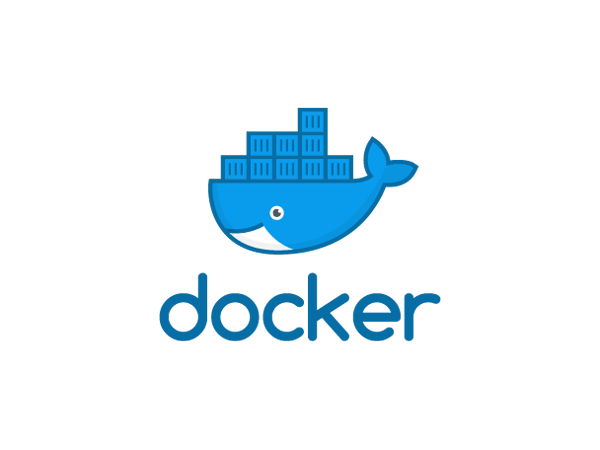Key consept
What is Swarm?
The cluster management and orchestration features embedded in the Docker Engine are built using swarmkit. Swarmkit is a separate project which implements Docker’s orchestration layer and is used directly within Docker.
クラスタ管理とオーケストレーションの機能がDockerエンジンに同梱されていますが、それらはswarmkitを利用して構築されます。swarmkitは独立したプロジェクトであり、Dockerのオーケストレーションレイヤーを実装し、Docker内で直接利用されます。
A swarm consists of multiple Docker hosts which run in swarm mode and act as managers (to manage membership and delegation) and workers (which run swarm services). A given Docker host can be a manager, a worker, or perform both roles. When you create a service, you define its optimal state (number of replicas, network and storage resources available to it, ports the service exposes to the outside world, and more). Docker works to maintain that desired state. For instance, if a worker node becomes unavailable, Docker schedules that node’s tasks on other nodes. A task is a running container which is part of a swarm service and managed by a swarm manager, as opposed to a standalone container.
swarmは複数のDockerホストから構成されていて、それらはswarmモードで起動され、manager(メンバーシップと委譲の管理)とworker(swarmサービスを起動する)として振る舞います。Dockerホストはmanager、worker、もしくは両方の役割を担うこともできます。サービス作成時に、最適な状態(レプリカの数、利用可能なネットワークやストレージリソース、外向けに開放するサービスのポートなど)を定義します。Dockerはその期待状態を維持するように動作します。例えば、workerノードが利用不可能になった場合、Dockerはそのノードのタスクが他のノードで実行されるようにスケジュールします。タスクは起動しているコンテナのことであり、swarmサービスの一部で、swarm managerによって管理され、スタンドアローンのコンテナとは別物です。
One of the key advantages of swarm services over standalone containers is that you can modify a service’s configuration, including the networks and volumes it is connected to, without the need to manually restart the service. Docker will update the configuration, stop the service tasks with the out of date configuration, and create new ones matching the desired configuration.
swarmサービスの重要な利点の一つは、スタンドアローンのコンテナと比べて、サービスの設定の変更が可能で、接続しているネットワークやボリュームを手動でサービスを再起動しなくても変更ができることです。Dockerは設定を更新し、最新でない設定のサービスタスクを止めて、期待する設定の新しいタスクを作成します。
When Docker is running in swarm mode, you can still run standalone containers on any of the Docker hosts participating in the swarm, as well as swarm services. A key difference between standalone containers and swarm services is that only swarm managers can manage a swarm, while standalone containers can be started on any daemon. Docker daemons can participate in a swarm as managers, workers, or both.
Dockerがswarmモードで起動している時でも、swarmサービスと同様に、swarmに参加しているどのDockerホスト上でもスタンドアローンのコンテナを起動できます。重要な差別化要素は、スタンドアローンコンテナと違い、swarmサービスはswarm managerだけがswarmの管理ができ、スタンドアロンコンテナはどのデーモン上でも起動できるということです。Dockerデーモンはswarmにmanager、worker、その両方として参加できます。
In the same way that you can use Docker Compose to define and run containers, you can define and run Swarm service stacks.
Docker Composeを利用して、コンテナを定義し、起動するのと同様に、swarmサービススタックを定義、起動できます。
Nodes
A node is an instance of the Docker engine participating in the swarm. You can also think of this as a Docker node. You can run one or more nodes on a single physical computer or cloud server, but production swarm deployments typically include Docker nodes distributed across multiple physical and cloud machines.
ノードとは、Dockerエンジンのインスタンスで、swarmに参加しているものを指します。これはDockerノードとしても考えることできます。1つ以上のノードを単一の物理サーバ、もしくはクラウドサーバで起動できますが、本番用のswarmのデプロイは基本的には複数の物理、クラウドマシンにDockerノードを分散化させます。
To deploy your application to a swarm, you submit a service definition to a manager node. The manager node dispatches units of work called tasks to worker nodes.
swarmにアプリケーションをデプロイするためには、サービス定義をmanageノードに送信します。managerノードはタスクと呼ばれるワークの単位をworkerノードに割り当てます。
Manager nodes also perform the orchestration and cluster management functions required to maintain the desired state of the swarm. Manager nodes elect a single leader to conduct orchestration tasks.
managerノードはオーケストレーションやクラスタ管理の機能を実現します。それはswarmの期待状態を維持するために必要です。managerノードは1つのリーダーを選び、オーケストレーションタスクを実行します。
Worker nodes receive and execute tasks dispatched from manager nodes. By default manager nodes also run services as worker nodes, but you can configure them to run manager tasks exclusively and be manager-only nodes. An agent runs on each worker node and reports on the tasks assigned to it. The worker node notifies the manager node of the current state of its assigned tasks so that the manager can maintain the desired state of each worker.
workerノードは、managerノードから割り当てられたタスクを受け取り、それを実行します。デフォルトではmanagerノードはworkerノードとしてもサービスを起動されますが、設定によってmanagerタスクのみを実行することも可能で、manager-onlyノードとなりえます。エージェントはそれぞれのworkerノード上で動作し、アサインされたタスク上でレポートします。workerノードはmanagerノードにアサインされたタスクの現状を通知するので、managerはそれぞれのworkerの状態を期待するものに維持することができます。
Services and tasks
A service is the definition of the tasks to execute on the manager or worker nodes. It is the central structure of the swarm system and the primary root of user interaction with the swarm.
サービスは、managerやworker上で実行されるタスクの定義です。swarmシステムの中心的な構造であり、swarmとのユーザインタラクションの重要な根幹でもあります。
When you create a service, you specify which container image to use and which commands to execute inside running containers.
サービス作成時、どのコンテナイメージを使いたいか、どのコマンドをコンテナ内で実行したいか、を指定できます。
In the replicated services model, the swarm manager distributes a specific number of replica tasks among the nodes based upon the scale you set in the desired state.
レプリケーションされるサービスモデルでは、swarm managerは、指定された数のレプリカタスクを、期待状態に設定されたスケールに基づいて、ノード間に分散します。
For global services, the swarm runs one task for the service on every available node in the cluster.
グローバルサービスを作成する場合、swarmはクラスタ内の利用可能な全てのノード上にそのサービスのタスクを起動します。
A task carries a Docker container and the commands to run inside the container. It is the atomic scheduling unit of swarm. Manager nodes assign tasks to worker nodes according to the number of replicas set in the service scale. Once a task is assigned to a node, it cannot move to another node. It can only run on the assigned node or fail.
タスクは、Dockerコンテナとそのコンテナ内で実行されるコマンドで構成され、swarmの最も小さいスケジューリング単位です。managerノードはタスクをworkerノードにアサインし、その数はサービススケールにセットされたレプリカの数に応じます。タスクがノードにアサインされると、他のノードには移せません。アサインされたノードで実行されるか失敗するかのどちらかです。
Load balancing
The swarm manager uses ingress load balancing to expose the services you want to make available externally to the swarm. The swarm manager can automatically assign the service a PublishedPort or you can configure a PublishedPort for the service. You can specify any unused port. If you do not specify a port, the swarm manager assigns the service a port in the 30000-32767 range.
swarm managerは内部負荷分散を利用して、外部で公開したいサービスをswarmに開放します。swarm managerは自動的にサービスを公開ポートにアサインすることもできるし、公開ポートをサービスのために設定することもできます。どの未使用ポートも指定可能です。ポートを指定しない場合、swarm managerはサービスを30000 – 32767の範囲内でポートをアサインします。
External components, such as cloud load balancers, can access the service on the PublishedPort of any node in the cluster whether or not the node is currently running the task for the service. All nodes in the swarm route ingress connections to a running task instance.
外部コンポーネント、例えばクラウドロードバランサなどは、クラスタ内のどのノードの公開ポートでもサービスにアクセスできます。そのノードが実際にサービスのタスクを実行しているかどうかは関係ありません。swarmの全てのノードは、内部接続を、実行しているタスクインスタンスにルーティングします。
Swarm mode has an internal DNS component that automatically assigns each service in the swarm a DNS entry. The swarm manager uses internal load balancing to distribute requests among services within the cluster based upon the DNS name of the service.
swarmモードは内部DNSコンポーネントを持っており、自動的にswarm内のそれぞれのサービスをDNSエントリーにアサインします。swarm managerは内部ロードバランシングを利用して、リクエストをサービスのDNS名に基づいてクラスタ内のサービス間で分散します。





